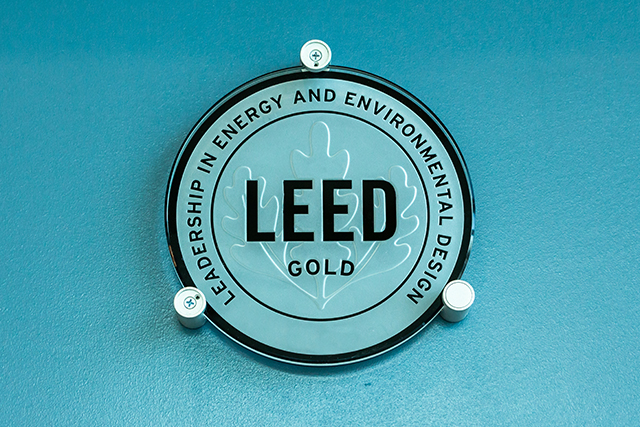Green building and construction management
March 23, 2020As climate change continues to worsen and effect all parts of the world, every industry will be impacted. Due to the inherent environmental impacts of the construction industry, construction managers must look to green solutions for their building projects. One proven resource construction managers can look to for answers are the Leadership in Energy and Environmental Design(LEED) standards.
Forming out of the US Green Building Council (USGBC) in 1993, LEED is the most widely used green building rating system in the world. LEED standards can be applied to every type of construction project, whether new construction, existing space re-design, operations and maintenance, or neighborhood development.
LEED buildings “are using less energy and water, avoiding waste, saving on maintenance costs, improving indoor air quality, offering comfort to their occupants, and creating less environmental burden on their community,” reports the USGBC website.
Releasing a new set of standards in 2019, with LEED 4.1, the program continues to evolve to best address the latest environmental issues and bring the greatest amount of benefit. As specified on the LEED website, LEED 4.1:
- Supports projects to implement sustainable and healthy building practices to realize environmental, economic, social, and community benefits for decades to come;
- Emphasizes integrative design to ensure better design, translation of design into high quality construction, optimize operations, and high performance of a building;
- Helps buildings deliver higher quality beyond market practices by incorporating innovative design, technologies, construction, and material selection strategies; and
- Focuses on both performance oriented sustainable strategies and outcomes.
LEED standards have proven health and environmental benefits. LEED-certified buildings have cleaner air and reduce pollution, energy use, and carbon emissions.
USGBC reports that LEED standard building projects resulted in 78 million tons of avoided CO2 emissions, 1.3 million tons of coal equivalent saved each year, and 25% less energy on average used by LEED buildings compared to commercial buildings.
Green building solutions not only benefit the environment – they have cost benefits as well. LEED-certified buildings have saved an estimated $1.2 billion in energy savings, $149.5 million in water savings, $715.3 million in maintenance savings, and $54.2 million in waste savings (estimate from LEED-certified buildings from 2015-2018).
With over 95,700 LEED-certified buildings in the United States, LEED standards have proven that construction managers can effectively integrate green building into nearly every construction project.
To learn more about Capitol’s degree programs in Construction, Facilities, and Safety, contact admissions@captechu.edu.



